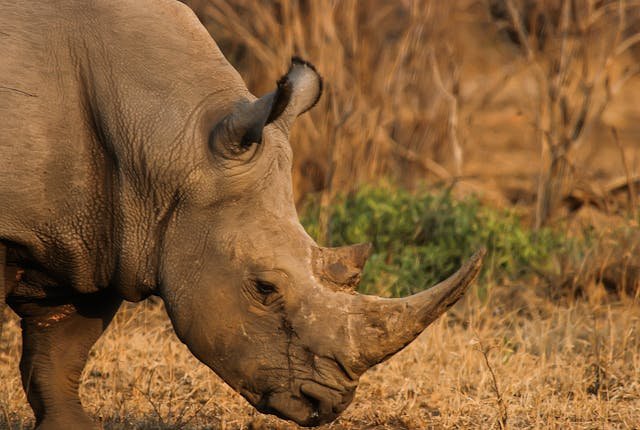Have you ever seen a picture of a tiger, a panda, or maybe a sea turtle and thought, “Wow, that’s such a beautiful animal”? Now imagine a world where those animals no longer exist. Sadly, for many species, this could happen if we don’t take action.
Across the planet, many animals and plants are in danger of disappearing forever. We call them endangered species. Some have only a few hundred left in the wild. Others are slowly losing their homes, their food, or their safety.
But here’s the good news: kids can make a difference. You don’t have to be a scientist or a world leader to help protect these animals. Small actions—like learning, sharing, and making kind choices—can create real change.
What Does Endangered Mean?
When we say an animal is endangered, it means that species is in danger of disappearing forever. Their numbers are so low that if nothing is done to protect them, they could vanish completely. This is called extinction. Once a species goes extinct, there are no more left anywhere on Earth. Dinosaurs are the most famous example. They once ruled the planet, but now we only know them from fossils. Sadly, many of today’s animals are walking the same path toward extinction if we do not act quickly.
Loss of Habitat
One of the biggest reasons animals become endangered is because they lose their homes. Just as people need safe houses to live in, animals need forests, rivers, grasslands, and oceans to survive. These places give them food, shelter, and protection. When forests are cut down for wood or cleared for farming, animals lose the only space where they can raise their young. Orangutans, for example, are losing their rainforest homes in Asia at an alarming rate. Without their trees, they cannot survive.
Hunting and Poaching
Another cause is hunting and poaching. Some animals are hunted for their fur, tusks, horns, or even bones. Elephants are often targeted for their ivory tusks, despite strict laws against it. Rhinos are hunted for their horns, which are sold illegally for large amounts of money. When animals are killed faster than they can reproduce, their populations drop dangerously low, putting them on the edge of extinction.
Climate Change
Climate change is another powerful force making life hard for many animals. As the Earth warms, habitats change too quickly for some species to adapt. Polar bears are one of the clearest examples. They depend on sea ice to hunt for seals, but as the ice melts earlier each year, they lose the ground they depend on. With less time to hunt and find food, their survival becomes more uncertain.
Pollution
Pollution also harms countless species. Plastic waste in the oceans is deadly for sea creatures. Sea turtles often mistake plastic bags for jellyfish, which are their favorite food. Birds, fish, and dolphins can become trapped in floating trash. Chemicals from farms and factories poison rivers and lakes, making them unsafe for fish and the animals that rely on clean water. Even the air can harm animals when it is filled with smoke or toxic gases.
Invasive Species
Sometimes the problem comes from animals or plants being moved to places where they do not naturally belong. These are called invasive species. They often spread quickly and take over, competing with local animals for food and space. On islands, invasive predators like rats or cats have wiped out native birds that had no defenses against them.
Different Levels of Endangerment
Not every endangered animal faces the same level of risk. Scientists use special categories to explain how close a species is to extinction. If a species is considered vulnerable, it means it is starting to face serious problems but could recover if action is taken. If it is labeled endangered, it means the species is already very rare and at high risk of disappearing. Critically endangered is the most serious level of all. This means only a tiny number remain, and the species could vanish very soon.
Tigers are currently endangered, with only a few thousand left in the wild. The giant panda was once endangered as well, but thanks to strong protection, it has recovered enough to be considered vulnerable today. On the other hand, the Yangtze giant softshell turtle is critically endangered, with only a handful known to exist.
Why It Matters
When an animal becomes endangered, it is not just a sad loss of a beautiful species. It affects the balance of nature. Every animal plays an important role in its ecosystem. Bees pollinate flowers, wolves keep deer populations under control, and sea turtles help keep seagrass beds healthy. When one species disappears, the whole system is disturbed. This means that protecting endangered animals is not only about saving wildlife—it is also about protecting the health of the planet and, ultimately, our own future.
Some of the Most Endangered Animals Today
Endangered animals live in every corner of the Earth, from the icy Arctic to the deepest oceans. Each of them has a story, and each is struggling to survive because of the changes humans have made to the planet. By learning about these species, we can better understand why they matter and how important it is to protect them.
Tigers
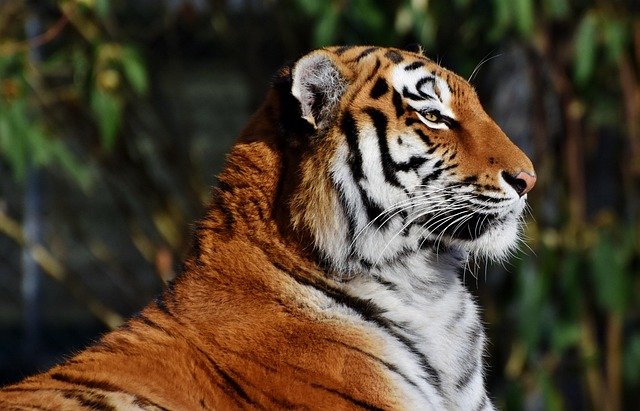
Tigers are one of the most powerful and admired animals in the world. They are known for their orange fur and black stripes, as well as their incredible strength. Yet today, there are fewer than four thousand left in the wild.
Tigers are endangered because their forests are being cut down, leaving them with less space to hunt and live. They are also hunted for their skins and bones, which are illegally sold. When tigers disappear, it doesn’t just affect the species—it also harms the balance of the forest, where they play an important role as top predators. Protecting tigers means protecting entire ecosystems.
Elephants
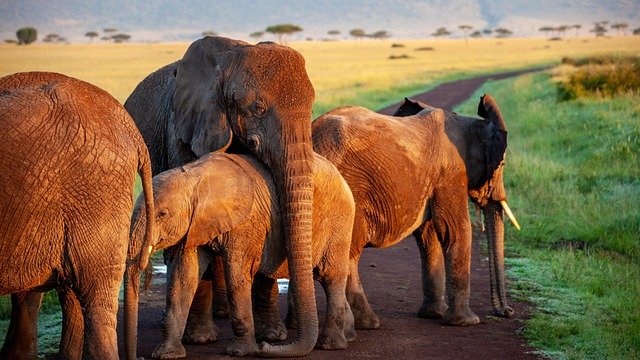
Elephants are the largest land animals on Earth. They are intelligent, emotional creatures that live in herds and care deeply for their families. Sadly, elephants are in danger because of poaching. Many are hunted for their ivory tusks, which are still sold on the black market despite bans.
African elephants and Asian elephants both face threats, not only from poachers but also from shrinking habitats. As more land is cleared for farms and cities, elephants lose the space they need to roam. Without safe areas, they are pushed closer to people, often leading to conflict. Saving elephants means saving the wide open spaces that many other animals need as well.
Sea Turtles
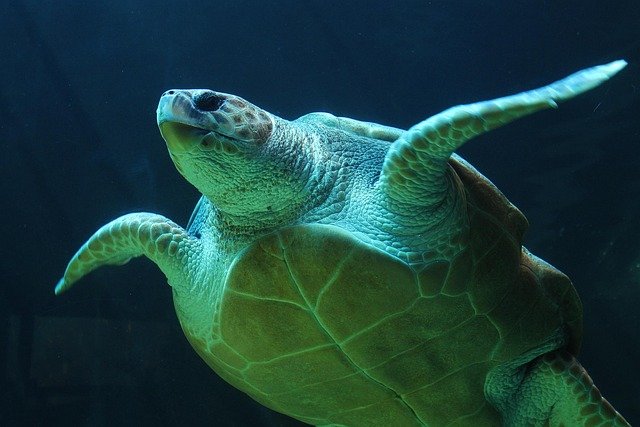
Sea turtles have lived in the oceans for more than one hundred million years. But now, most species of sea turtles are endangered. One of the biggest threats they face is plastic pollution. Many turtles mistake plastic bags for jellyfish and eat them, which can block their stomachs and kill them.
They also face danger from fishing nets, where they can get trapped and drown. On land, their nesting beaches are often disturbed by humans, making it harder for baby turtles to hatch and reach the sea. Protecting sea turtles requires keeping oceans clean and beaches safe.
Polar Bears
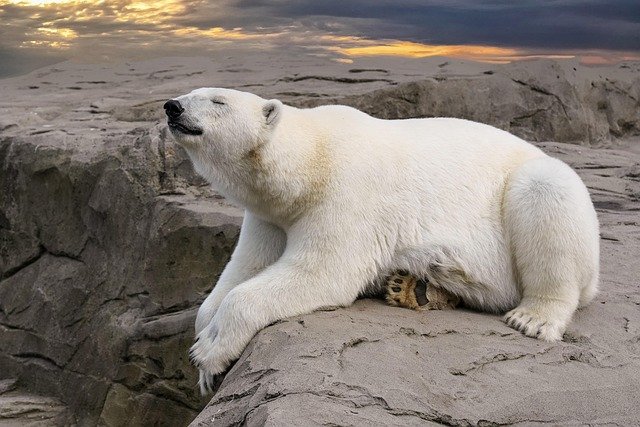
Polar bears live in the Arctic, where they hunt seals on the ice. They are perfectly adapted to cold life, with thick fur and layers of fat to keep them warm. But as the Earth gets warmer, the sea ice is melting. Polar bears are forced to swim longer distances to find food, and many struggle to survive.
The shrinking ice is a direct result of climate change. If we cannot slow down global warming, polar bears may lose their homes entirely. Protecting them means protecting the planet’s climate.
The Giant Panda
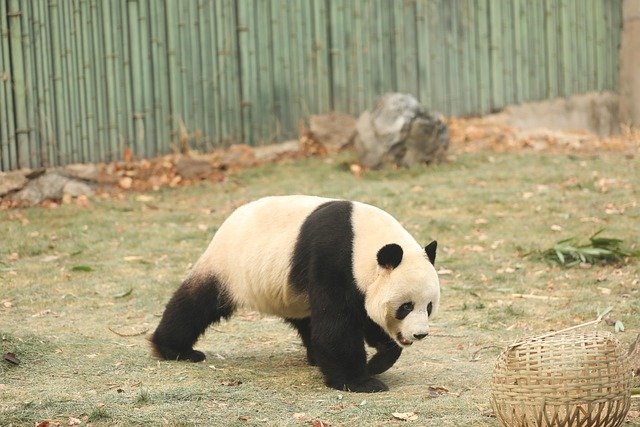
The giant panda is one of the most loved animals in the world. With its black-and-white fur and gentle nature, the panda has become a symbol of wildlife conservation. Pandas once faced extinction because of habitat loss, as their bamboo forests were destroyed.
Thanks to years of strong protection, panda numbers have begun to rise. They are now listed as vulnerable instead of endangered, showing that conservation works. The story of the panda gives us hope that with enough care and action, other species can also be saved.
Critically Endangered Species
Some species are in even more serious danger. The Yangtze giant softshell turtle, for example, has fewer than ten individuals left in the entire world. The vaquita, a small dolphin that lives in the northern part of the Gulf of California in Mexico, is believed to have fewer than twenty left. These species are hanging on by a thread, and without urgent action, they could vanish forever.
Every one of these animals is important. They are not just beautiful creatures, but vital parts of their ecosystems. By protecting them, we also protect the forests, oceans, rivers, and ice that we all depend on.
Why Endangered Animals Matter to the Planet and to Us
When we hear that an animal is endangered, it is easy to think of it only as a loss of beauty. We imagine the tiger, the elephant, or the sea turtle disappearing, and it feels sad. But the truth is much bigger. When a species disappears, it changes the balance of nature. And because we are part of nature, those changes eventually affect us too.
The Web of Life
Every living thing is connected. This is sometimes called the “web of life.” Imagine a spider’s web: every thread is linked to the others. If one thread is broken, the whole web shakes. The same is true in nature. Every species plays a role, no matter how big or small.
For example, bees pollinate flowers. Without them, many plants could not grow, and without those plants, humans would not have enough food. Sea otters eat sea urchins, which keeps the urchin population under control. If sea otters disappear, urchins multiply and destroy the kelp forests that shelter countless sea creatures. Wolves in Yellowstone National Park keep deer numbers balanced. When wolves were gone, deer ate too much grass, and the land suffered. When wolves were reintroduced, the whole park began to heal.
Endangered animals are part of this web. When they vanish, it sets off a chain reaction. Saving them means saving the balance of life itself.
Protecting Habitats Protects Everyone
When we protect endangered species, we also protect the places they live. These habitats—forests, wetlands, coral reefs, and grasslands—are not only homes for animals, but also essential for humans.
Forests clean the air and provide us with oxygen. Wetlands filter water and protect us from floods. Oceans regulate the planet’s temperature and give us food. By saving habitats for animals, we are also saving them for ourselves.
Take the case of elephants. They need large areas of forest and savanna to survive. Protecting those areas not only helps elephants but also helps birds, insects, plants, and even people who depend on healthy land. When we focus on saving one species, we often end up saving hundreds more along with it.
Culture and Inspiration
Animals are not only part of nature—they are part of our cultures, our stories, and our imaginations. Tigers, lions, and eagles have been symbols of strength in myths and legends for centuries. Pandas, dolphins, and elephants bring joy and wonder to millions of people around the world. Losing them would mean losing part of our human story.
Children especially connect to animals. They draw them, dream about them, and are inspired by them. Protecting endangered species means ensuring that future generations will still grow up in a world filled with these amazing creatures.
The Human Responsibility
Finally, we must remember that most animals are endangered because of human actions—deforestation, pollution, climate change, and overhunting. That means it is also humans who must take responsibility for protecting them. By learning, caring, and acting, we can make a real difference.
When we save endangered species, we are not only helping animals. We are protecting our environment, our cultures, and our own survival. In truth, saving them means saving ourselves.
How Kids Can Help Save Endangered Animals
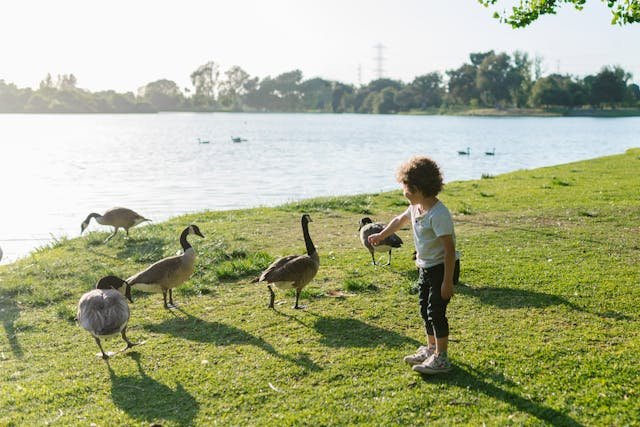
Many children believe they are too small to make a difference. But history shows us that change often starts with small actions. Every choice you make, every habit you build, and every voice you raise can help protect animals and the planet. You don’t need to be a scientist or a leader. You just need to care and take small, smart steps.
Learn and Share
The first and most powerful thing kids can do is learn about endangered species and share what they know. When you understand why animals are in danger, you become part of the solution. Talk to your friends and family about what you discover. Tell them about the importance of protecting elephants, or explain how sea turtles mistake plastic for food. Knowledge spreads like ripples in water. The more people know, the more they can help.
Some kids even start small school projects or create posters to raise awareness. Others write stories or draw pictures about endangered animals and share them online or in their classrooms. These creative acts inspire others to care.
Respect Nature
One of the simplest but most powerful ways kids can help is by respecting nature. When you go outside, avoid littering. If you see trash on the ground, pick it up safely with gloves and throw it away properly. At the beach, remember that sea turtles or crabs may live there, so avoid leaving plastic bottles or food wrappers behind.
If you are in a park or forest, watch animals from a distance rather than disturbing them. Even small actions like these keep habitats cleaner and safer for wildlife.
Use Less Plastic
Plastic, a type of polymer is one of the biggest dangers to wildlife, especially sea creatures. Animals often eat it by mistake, or they get tangled in it. Kids can help by using less plastic in their daily lives. Bring a reusable water bottle to school instead of buying plastic ones. Use cloth bags instead of plastic bags when shopping with your family. Even saying “no” to plastic straws in restaurants makes a difference.
Every piece of plastic avoided is one less piece that could end up in the ocean. Imagine how powerful that becomes when millions of kids do the same thing.
Support Wildlife Organizations
Even though children cannot travel to faraway forests to protect tigers or rhinos, they can support the people who do. Many organizations around the world work to save endangered species, and they rely on donations and awareness. Kids can organize small fundraisers—like bake sales, art shows, or recycling drives—to collect money for these groups.
Some children “adopt” an animal symbolically through a wildlife program, receiving certificates or updates about the species they are helping. It may seem small, but it directly supports conservation work.
Speak Up
Finally, kids can use their voices to remind adults to make choices that protect nature. Write a letter to your local leaders about protecting green spaces. Share your ideas in class discussions. Encourage your family to recycle, save energy, and use water wisely. Adults often underestimate how powerful a child’s voice can be. But when kids speak with passion, people listen.
Helping endangered species is not about doing everything at once. It is about doing what you can, step by step. Every action counts. A child who learns, respects nature, uses less plastic, and inspires others can create ripples that grow into waves of change.
How Debsie Makes Learning About Endangered Animals Exciting and Meaningful for Kids
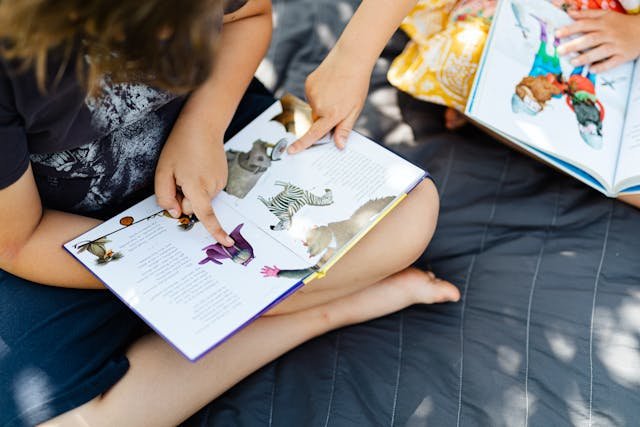
At Debsie, we believe that learning about endangered species is more than just memorizing facts. It is about sparking curiosity, building compassion, and helping children feel empowered to take action. When kids understand the challenges animals face, they begin to see themselves as protectors of the planet. That shift is powerful, and it is exactly what our teachers aim to create.
Storytelling That Brings Animals to Life
Children remember stories far more than lists or numbers. That is why at Debsie, our teachers present endangered species as characters in real-life adventures. Instead of just saying “tigers are endangered,” we share the story of a tiger searching for food as its forest disappears. Instead of saying “sea turtles eat plastic,” we explain what happens when a young turtle mistakes a floating bag for a jellyfish. These stories help children connect emotionally to the animals, making the problem feel real and important.
Hands-On Learning
We believe the best way for children to understand is by doing. That is why we include simple, safe activities in our lessons. For example, kids might keep a “plastic diary” for a week to track how much plastic their family uses, then brainstorm ways to reduce it. They may create posters about endangered animals and share them with classmates. Some even write letters to community leaders asking for better recycling or conservation programs. These small but meaningful actions turn learning into real-world change.
Gamified Exploration
Children love challenges and games, and we use that energy to make lessons more exciting. In Debsie’s classrooms, students might take part in role-play activities where they act as different animals in an ecosystem, seeing how each depends on the other. They might compete in quizzes where the goal is to identify which animal is endangered and why. Games turn difficult topics into fun adventures, so kids not only learn faster but also enjoy the process.
Connecting Science to Everyday Life
We show kids that protecting endangered species is not just about faraway jungles or oceans—it connects directly to their own lives. For example, we explain that turning off lights saves energy, which helps slow climate change, which in turn helps polar bears keep their ice. We show how recycling reduces the plastic that threatens turtles and dolphins. When children see the connection between their daily actions and the survival of animals, they feel empowered to make a difference.
Guided by Expert Teachers
Our partner teachers are not just science experts—they are passionate educators who know how to speak to kids in simple, engaging language. They avoid heavy scientific jargon and instead use clear, warm explanations. This makes children feel confident, curious, and eager to learn more. Instead of overwhelming them with problems, teachers at Debsie focus on hope—showing that change is possible and that kids are part of the solution.
At Debsie, endangered species are not just a lesson in science. They are a lesson in responsibility, empathy, and empowerment. We give kids the tools to see the problem, understand it, and believe that their actions matter. That belief can inspire a lifetime of care for the planet.
Practical Activities Kids Can Do at Home or School to Support Endangered Species
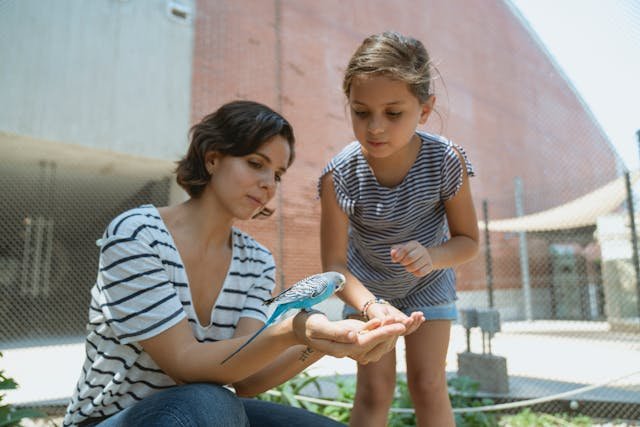
Learning about endangered animals is only the first step. The next—and most exciting—step is action. Kids often feel powerless because the problems seem so big, but the truth is that even small actions can make a difference when many people do them. Here are some practical activities children can try at home, in school, or in their communities.
Create a “Wildlife Corner” at School
Children can work with their teachers to set up a small space in the classroom or library where information about endangered animals is displayed. This could include drawings, fun facts, and short stories written by students. By updating the corner regularly, kids keep the topic alive and spark conversations among classmates. It is a simple way to spread awareness and inspire others to care.
Start a “No-Plastic” Challenge
Plastic pollution is one of the biggest threats to sea animals. At home or school, kids can start a challenge to see how long they can go without using single-use plastics such as straws, bottles, or bags. They can keep track of their progress on a chart and celebrate each week they reduce plastic use. Families and friends often join in, turning it into a group effort that makes a real difference.
Adopt an Animal Symbolically
Many wildlife organizations allow families or schools to “adopt” an endangered animal. This does not mean taking the animal home, of course, but it means donating money that helps protect its habitat. Kids receive certificates, pictures, and updates about the animal they are supporting. This activity gives children a sense of connection to real animals and shows them how their efforts have a global impact.
Organize a Fundraiser
Children love being creative, and fundraising gives them the chance to use that creativity for a cause. Some ideas include a bake sale, a used-book drive, or even an art show where kids sell drawings or crafts of their favorite animals. The money collected can be sent to organizations working to save endangered species. Not only does this help animals directly, but it also teaches kids the power of teamwork and community effort.
Plant a Mini Garden for Pollinators
Even in a small space like a backyard, balcony, or schoolyard, children can plant flowers that attract bees and butterflies. These pollinators are crucial for ecosystems, and many species are declining. By planting flowers, kids create safe spaces for them to feed and thrive. Watching bees visit their garden teaches children firsthand how small actions support the larger web of life.
Write and Share Stories
Children can use their creativity to raise awareness. They can write stories, poems, or short plays about endangered animals and perform them for their class or family. They can even create posters or comics to share online or in the community. These activities not only strengthen their imagination but also spread messages of care and protection to a wider audience.
Build a Recycling Club
At school, kids can form a recycling club to collect paper, cans, or bottles. They can keep track of how much waste they reduce each month and share the results with classmates. Knowing that their efforts keep trash out of nature helps children feel directly connected to protecting wildlife.
Practical activities like these show kids that saving endangered species is not just about faraway jungles or oceans—it begins in their own homes and schools. When children take action, they not only help animals but also build habits of responsibility, teamwork, and creativity that will last a lifetime.
Success Stories of Endangered Animals That Have Been Saved
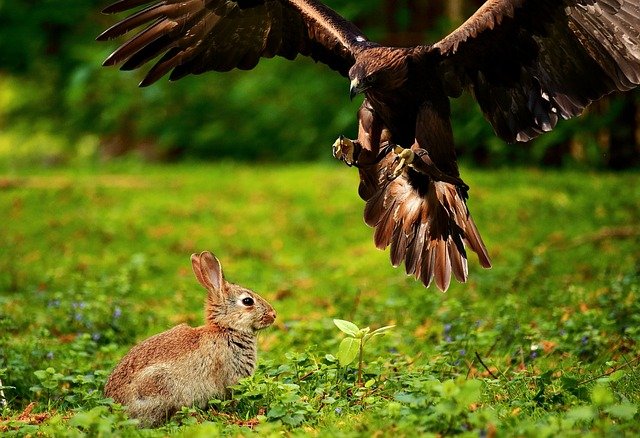
It is easy to feel sad when we hear about endangered animals. But there is also a lot of good news. Around the world, many species that were once close to extinction have been brought back thanks to people who cared and acted. These success stories prove that when humans work together, change is possible.
The Giant Panda
The giant panda is one of the best-known symbols of endangered species. For many years, their numbers were falling because bamboo forests, their main food source, were being cut down. At one point, pandas were so rare that scientists feared they might disappear completely.
But through strong conservation efforts, things began to change. China created protected reserves where pandas could live safely. Bamboo forests were replanted to give them food. Breeding programs in zoos also helped increase their numbers. Today, the giant panda is no longer considered endangered but instead listed as vulnerable. This change shows that with care and effort, even a species on the edge can recover.
The Bald Eagle
In the United States, the bald eagle—the national bird—was once in great danger. By the mid-20th century, pesticides and hunting had nearly wiped them out. There were only a few hundred left.
Then people took action. Laws were passed to stop hunting them, harmful chemicals like DDT were banned, and large areas of land were protected. As a result, the bald eagle population soared. Today, they can be seen flying across America once again. The bald eagle’s recovery is one of the greatest conservation success stories in history.
The Gray Wolf in Yellowstone
For decades, wolves had disappeared from Yellowstone National Park in the United States. Without wolves to control their numbers, deer and elk became too numerous. They overgrazed the land, damaging plants and leaving little food for other animals. The whole ecosystem was out of balance.
When wolves were reintroduced in the 1990s, everything began to change. Wolves kept deer populations under control, and the land recovered. Plants grew back, beavers returned to build dams, and rivers even flowed differently because the ecosystem had healed. This story shows that saving a single species can bring life back to an entire environment.
The Humpback Whale
Humpback whales were once hunted almost to extinction for their oil and meat. By the 1960s, their numbers had fallen drastically. But then, whaling was banned in many parts of the world. With protection, humpback whales began to recover. Today, their numbers are rising, and they can be seen swimming in oceans worldwide.
This comeback proves that even the largest creatures on Earth can recover when humans give them the chance.
What These Stories Teach Us
The giant panda, the bald eagle, the gray wolf, and the humpback whale all faced extinction. But people stepped in, worked together, and made changes. The result was survival and recovery. These success stories remind us that while the problem of endangered animals is serious, it is not hopeless. With effort, laws, education, and care, we can save species. And the best part is, kids can be part of this story by making small but powerful choices every day.
Conclusion: Protecting Endangered Species Starts With Us
Endangered species remind us how fragile and connected life on Earth really is. When animals lose their homes, when oceans fill with plastic, or when climates change too quickly, entire species can vanish. But protecting animals like tigers, elephants, and sea turtles is not only about saving them—it is about protecting the balance of nature that keeps our planet healthy. Every creature, big or small, plays an important role in this great web of life.
The good news is that change is possible. Stories of the giant panda, the bald eagle, and the humpback whale prove that when people care and act, endangered animals can recover. Even the smallest steps, like using less plastic, planting flowers for pollinators, or raising awareness at school, create ripples that grow into powerful waves of change. Kids, in particular, hold the key to inspiring families, friends, and communities to act with more kindness toward the planet.
At Debsie, we believe every child has the power to be a protector of the Earth. Through stories, hands-on activities, and fun challenges, we make learning about endangered species exciting and meaningful. By helping children see the connection between their daily choices and the survival of animals, we give them the tools to grow into responsible, confident, and curious young leaders. Protecting endangered species begins with small actions—and those small actions begin with us.
Read Next:
